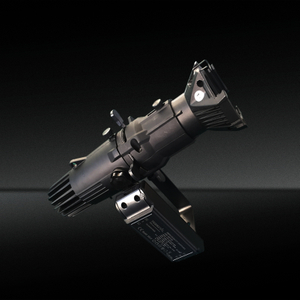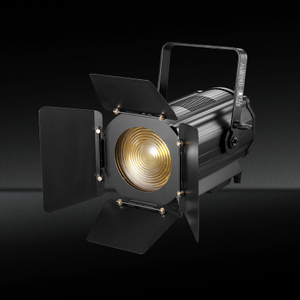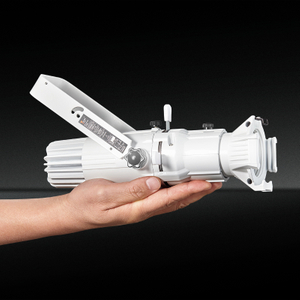What is better, a spotlight or a floodlight?
Views: 9 Author: Site Editor Publish Time: 2025-08-13 Origin: Site








Key Takeaways
Spotlights create focused beams to highlight specific objects, while floodlights spread wide light to cover large areas.
Use spotlights for accent lighting, safety in small areas, and dramatic effects; use floodlights for broad illumination and security.
Combining spotlights and floodlights creates layered lighting that balances safety, style, and functionality.
LED technology improves energy efficiency, brightness, and lifespan for both spotlights and floodlights.
Plan lighting based on area size, desired effect, and location to choose the right fixtures and placement.
Spotlight vs Floodlight
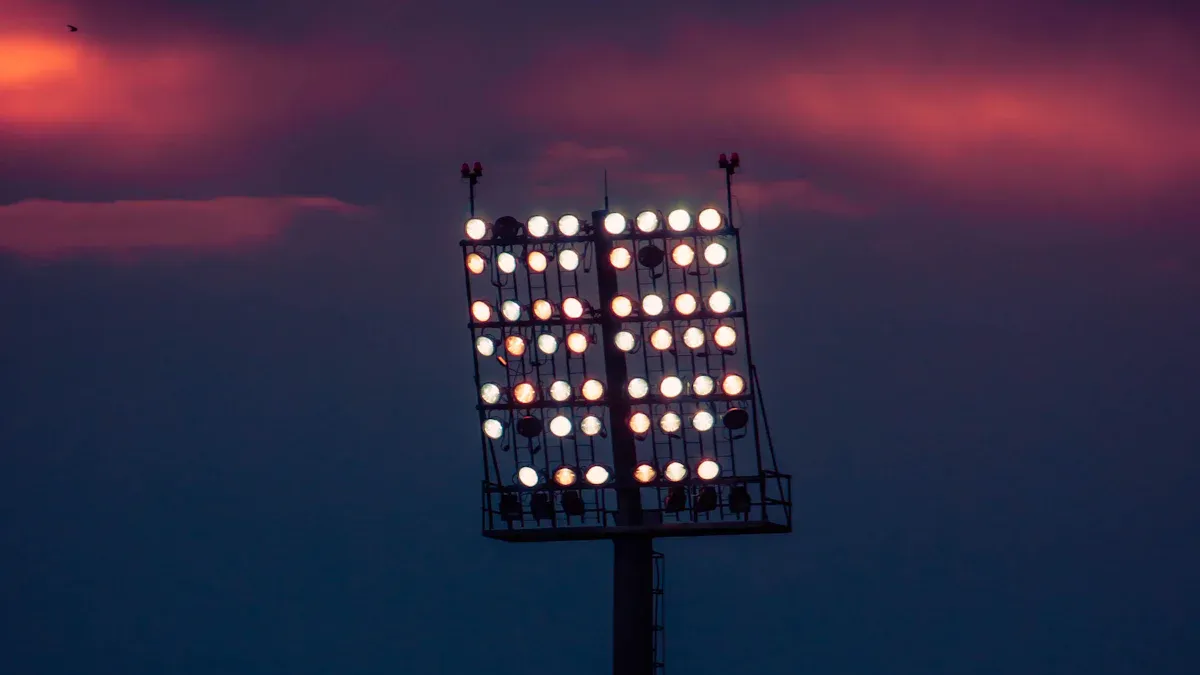
Key Differences
Spotlights and floodlights serve different purposes in lighting design. The main technical differences include beam width, intensity, fixture shape, and light distribution. Spotlights use a narrow spot beam, usually less than 45 degrees, to focus intense light on a small area. Floodlights, in contrast, use a wide flood beam, often between 45 and 120 degrees, to cover large spaces with even illumination. Fixture design also varies. Spotlights often have adjustable heads and may require extra weatherproofing for outdoor use. Floodlights feature durable, weather-resistant housings with heat sinks to manage heat and extend lifespan.
The table below highlights the core differences between these two lighting types:
Aspect | Floodlights | Spotlights |
|---|---|---|
Beam Angle | Wide (45°–120°), flood beam | Narrow (<45°, often 10°–20°), spot beam |
Lumen Output | High, covers large areas | Moderate to high, focused on small area |
Fixture Design | Weatherproof, heat sinks, broad optics | Adjustable focus, may need extra sealing |
Light Distribution | Broad, even coverage (flood beam) | Focused, directional (spot beam) |
Coverage Area | Yards, parking lots, sports fields | Statues, trees, architectural details |
Floodlights excel at illuminating large outdoor areas such as parking lots or sports fields. Their wide flood beam and high lumen output make them ideal for general area lighting. Spotlights, with their narrow spot beam, work best for highlighting specific features or providing accent lighting. The focused spot light can create dramatic effects and draw attention to particular objects.
Pros and Cons
Both spotlights and floodlights offer unique advantages and disadvantages. The choice depends on the intended use and the desired lighting effect.
Spotlights
Pros:
The narrow spot beam allows precise control, making it easy to highlight specific features in a landscape or on a building.
Spotlights provide energy efficiency, especially with modern LED technology, which reduces electricity use and extends lifespan.
Adjustable heads and various styles offer flexibility in design and placement.
Spotlights improve safety by illuminating entryways or dark corners, helping deter intruders.
The focused spot light creates dramatic effects, perfect for accentuating statues, trees, or architectural elements.
Cons:
The limited coverage area means multiple spotlights may be needed to light a large space.
Improper positioning can cause glare or harsh shadows.
Spotlights often cost more upfront than basic lighting options.
Older spotlights, such as halogen models, may produce excess heat.
Installation can be complex, sometimes requiring professional help.
Floodlights
Pros:
Floodlights illuminate large areas with just one or two fixtures, making them efficient for general lighting.
Installation is usually straightforward, especially when mounted on buildings.
Floodlights deter crime and improve safety by providing bright, even light over wide spaces.
These fixtures are durable, weather-resistant, and energy efficient, especially with LED models.
Adjustable positioning and dimming features allow for flexible lighting effects.
Floodlights operate smoothly without buzzing or flickering and are environmentally friendly.
Cons:
The intense brightness of a flood light can cause light pollution, affecting neighbors and wildlife.
Floodlights may not enhance landscape aesthetics as well as spotlights, since they produce a utilitarian effect.
Professional installation may be needed for integrated or built-in flood light setups.
The upfront cost of a flood light can be higher than other lighting types, but fewer units are usually needed.
Tip: When choosing between a spot light and a flood light, consider the size of the area, the desired effect, and the specific lighting needs. Combining both types can create a layered lighting design that balances coverage and accent.
Spotlight
What Is a Spotlight?
A spotlight is a lighting fixture designed to direct a focused beam of light onto a specific area or object. Most spotlights feature a round head and a narrow spot beam, usually between 15 and 30 degrees. This design allows the fixture to concentrate light on a small target, making it ideal for highlighting details. Common types include fixed spotlights, which have a stationary beam, track spotlights that can be adjusted along ceiling tracks, and recessed spotlights installed into ceilings or walls for a clean appearance. High-quality spotlights often use LED technology for energy efficiency and long life.
Spotlights are used to draw attention to artwork, architectural features, or landscape elements.
Construction options include weather-resistant materials for outdoor use.
The focused beam of light helps create dramatic effects in both indoor and outdoor settings.
Beam and Intensity
Spotlights stand out for their high intensity and precise direction. The spot beam produces a focused light beam, which results in higher candela and lux values compared to general lighting. Candela measures the brightness in a specific direction, while lux measures how much light reaches a surface. Because the spot light directs most of its output onto a small area, it delivers more intense illumination at a given distance than broader lighting types. This makes spotlights effective for both close-range and long-range visibility, especially when highlighting distant objects or features.
Note: Spotlights with narrow beams can reach farther and provide greater visibility than lights with wider beams, even if both have the same lumen output.
Best Uses
Spotlights excel in situations where targeted lighting is needed. Indoors, they emphasize architectural elements, highlight artwork, or define specific zones within a room. Outdoors, spotlights can showcase trees, flower beds, or building facades. They also improve safety by guiding visitors along driveways or walkways. Spotlights are common in artistic and dramatic settings, such as theaters or galleries, where precise control over lighting is essential. Combining spotlights with other area lights can create a balanced and visually appealing lighting scheme.
Indoors: highlight art, accent walls, or reading areas.
Outdoors: illuminate landscaping, guide pathways, or enhance security.
Artistic settings: provide dramatic effects and focus attention.
Floodlight
What Is a Floodlight?
A floodlight is a lighting fixture designed to cast a wide, diffused light over large areas. Most floodlights feature a rectangular or square head, which helps spread the light evenly. The fixture often uses a reflector to direct the flood beam outward. Traditional floodlights have a beam angle of about 120 degrees, making them ideal for illuminating broad spaces such as parking lots or sports fields. Modern LED floodlights offer a range of beam angles, including 25°, 45°, 60°, 90°, and even polarized beams like 70°x140° for stadiums. The table below summarizes the main characteristics:
Characteristic | Description |
|---|---|
Typical Beam Width | Traditional: ~120° for large-area illumination; Modern LED: 25°–140° options |
Fixture Shape | Usually rectangular or square, designed for wide coverage |
Beam and Coverage
Floodlights stand out for their ability to cover large areas with uniform, diffused light. The wide flood beam, often around 120 degrees, allows a single floodlight to illuminate spaces that would require several spotlights. When mounted at the same height, a floodlight covers a much broader area than a spotlight. The flood beam reduces shadows and dark spots, making it suitable for general lighting and security. This even distribution of light helps people see obstacles and move safely in outdoor environments.
Note: Floodlights provide broad, consistent illumination, while spotlights focus on a small, intense area. This difference makes floodlights better for general visibility and safety.
Best Uses
Floodlights excel in situations where wide, even lighting is essential. People often choose a floodlight for outdoor spaces that need to be safe and visible at night. Common scenarios include:
Lighting patios, driveways, and yards for better nighttime visibility
Enhancing safety in parking lots, sports venues, and public infrastructure
Providing security lighting near entry points, windows, and property perimeters
Reducing shadows and dark spots to lower accident risks
Integrating with motion sensors to deter intruders and alert homeowners
Supporting commercial and industrial sites with durable, energy-efficient lighting
LED floodlights also offer energy savings and lower heat output compared to older halogen models. Many floodlights come in different colors, allowing for both security and decorative uses. The adaptability and durability of the flood light make it a reliable choice for many outdoor applications.
Follow Spot Light
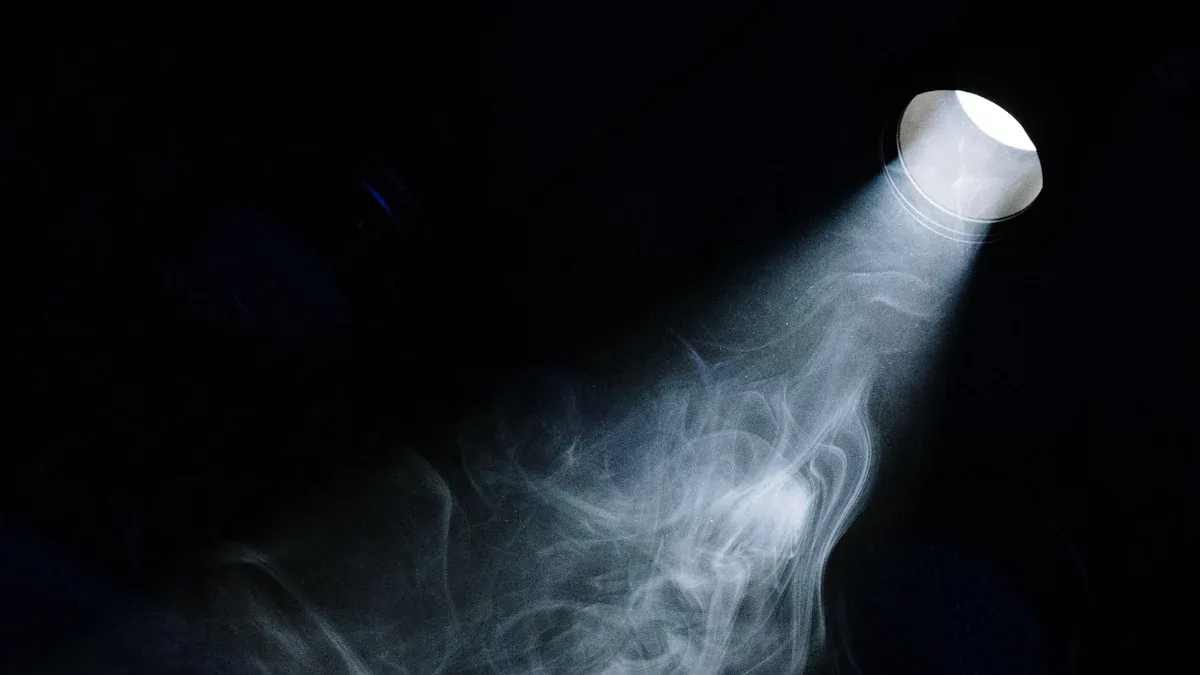
Stage and Event Use
A follow spot light plays a unique role in stage productions and live events. This specialized spotlight is designed to cast a strong, focused beam that can be moved by hand. Operators use the follow spot light to track a performer or presenter as they move across the stage. This real-time tracking helps keep the main subject brightly lit, even during fast-paced scenes or complex choreography. Unlike standard spotlights, which stay fixed in one position, the follow spot light allows for dynamic lighting that adapts to the action on stage. The intense, concentrated beam draws the audience’s attention to the star of the show, making it a favorite tool in theaters, concerts, and large events.
The follow spot light stands out because it offers flexibility and adaptability during live performances. Operators can make instant changes to the light’s position and focus, which is not possible with stationary spotlights.
Manual Control Features
The follow spot light gives the operator several ways to adjust the lighting in real time. These manual controls help create the perfect effect for each moment on stage. Key features include:
Manual operation by a trained operator
Adjustable beam size to focus on a single performer or a group
Control over light intensity for dramatic or subtle effects
Color adjustments to match the mood or scene
The ability to pan and tilt the light, following performers as they move
Some follow spot light models also offer extra features, such as ergonomic handles and color correction filters. These options give the operator even more precise control over the lighting. The combination of manual tracking and adjustable settings makes the follow spot light an essential tool for any stage production that requires flexibility and attention to detail.
Choosing the Right Light
Security
Effective security lighting protects homes and properties by deterring intruders and improving visibility. Studies show that improved outdoor lighting can reduce crime by up to 39% in public housing areas. The best approach uses a combination of lighting types and strategic placement.
Floodlights cover large areas, making it difficult for intruders to hide.
Landscape spotlights target specific vulnerable spots, such as entryways or dark corners.
Small lights along paths remove shadowy areas.
Motion detection lights startle intruders and create a strong psychological deterrent.
LED lighting offers superior brightness and clarity, making it easier to identify suspicious activity. The white, natural light of LEDs mimics daylight, which helps with facial recognition and movement detection. LEDs also work well with motion sensors and provide energy efficiency and durability.
Type of Light | Typical Lumens Output | Typical Power Consumption (Watts) |
|---|---|---|
Floodlight | 700 to 1300 | 7 to 10 |
Spotlight | 50 to 300 | 2 to 6 |
Spotlights use less power for targeted security, while floodlights use more power but cover larger areas. Solar-powered LED floodlights can further reduce energy costs.
Tip: Place lights at entrances, pathways, and other vulnerable points to maximize deterrence. Combining different types of lighting creates a safer environment.
Landscape
Landscape lighting highlights the beauty of gardens, trees, and outdoor features while improving safety. A well-designed plan uses both landscape spotlights and landscape flood lights for the best effect.
Uplighting at the base of trees creates dramatic silhouettes and highlights textures.
Downlighting from above brightens garden beds and water features.
Grazing lights close to walls accentuate textures and architectural details.
Moonlighting from high in trees mimics natural moonlight for a soft, inviting glow.
Silhouetting places lights behind objects to create striking outlines.
Pathway lighting ensures safe walking and adds ambiance.
Accent lighting draws attention to sculptures or special plants.
Landscape Feature | Recommended Techniques | Fixture Placement Tips |
|---|---|---|
Trees | Uplighting, accent lights | Ground level, aim at trunk and branches |
Statues/Sculptures | Floodlights, uplights, downlights | Avoid glare, highlight key features |
Pathways | Path lights, step lights | 8-10 feet apart, staggered, low profile |
Shrubs/Flower Beds | Stake lights, front lighting | Within beds, highlight color and texture |
Water Features | Underwater LEDs, spotlights | Highlight movement, create glowing effects |
Landscape spotlights emphasize the height and structure of trees, while floodlights illuminate larger garden spaces. Layering different types of lighting adds depth and guides the eye. Proper placement avoids harsh contrasts and enhances nighttime beauty.
Indoor
Indoor lighting design balances function and comfort. Spotlights with narrow beams highlight artwork or merchandise, while floodlights provide general illumination.
Use spotlights with beam angles of 30 to 45 degrees, positioned about 10 to 12 feet from the floor, to highlight specific items and reduce glare.
Employ floodlights for broad, even lighting in larger rooms or galleries.
Space fixtures evenly along tracks for uniform coverage.
Add dimmers and smart controls to adjust intensity for different needs.
Select LED lights with minimal UV emissions to protect sensitive items.
Choose color temperatures around 3000K to 3500K for accurate color rendering.
Spotlights can cause glare if not positioned carefully. Floodlight-style LED panels emit softer, diffused light that reduces glare and harsh shadows. Combining ambient, task, and accent lighting creates a comfortable and visually appealing space.
Outdoor
Outdoor lighting must withstand weather, provide safety, and enhance curb appeal. The right choice depends on the area and purpose.
Select fixtures that match the home’s style and can handle local climate conditions.
Create a lighting plan that includes patios, driveways, and large open areas.
Use landscape spotlights to highlight trees or architectural features.
Choose landscape flood lights for broad coverage of yards or gardens.
Place path lights about 1.5 times their height apart for even illumination.
Use dimmers and smart controls for flexibility and energy savings.
Consider solar-powered or low-voltage options for easier installation and lower energy use.
Note: Combining spotlights and floodlights outdoors creates layered lighting that balances security, safety, and aesthetics. This approach enhances depth, contrast, and overall visual interest.
Combining Both
Layered Lighting
Layered lighting creates safe and attractive spaces in homes and businesses. Designers use several types of fixtures to achieve this effect. Floodlights provide broad illumination for driveways, gardens, and building exteriors. These fixtures improve visibility and help prevent accidents. Spotlights add focused accent lighting that highlights architectural features, trees, or sculptures. This combination adds depth and visual interest to outdoor areas.
Well-placed lighting fixtures avoid glare and light pollution. They guide people safely along walkways and paths. Motion sensors and timers increase energy savings and make lighting more convenient. LED technology ensures long-lasting and cost-effective illumination. Weather-resistant fixtures perform well in all seasons.
Layered lighting covers all functional and aesthetic needs. Ambient lights set the overall mood. Task lights help with specific activities. Accent lights draw attention to special features. This approach balances safety, security, and style.
Spotlights highlight key features and add drama.
Floodlights cover large areas and improve security.
Combining different types of lighting eliminates dark spots and shadows.
Proper placement enhances both safety and visual appeal.
When to Use Both
Designers often recommend using both spotlights and floodlights in outdoor lighting plans. Spotlights work best for accentuating focal points such as statues, garden walls, or trees. Floodlights suit large spaces like driveways and parking lots, where broad illumination is needed for safety. Together, these fixtures create a balanced environment that looks inviting and feels secure.
Lighting professionals suggest combining both types for layered effects. Floodlights provide ambient safety lighting. Spotlights add dimension by highlighting water features or greenery. This strategy helps guide navigation and deters intruders. It also makes outdoor spaces more enjoyable for gatherings and activities.
Thoughtful lighting choices blend function with style. They create safe, beautiful environments that stand out at night.
Choosing between a spotlight and a floodlight depends on the lighting goal. Spotlights deliver focused beams for highlighting features, while floodlights offer broad, even coverage for large spaces. Many experts recommend combining both for safety and visual appeal.
LED technology, smart controls, and solar options improve efficiency and flexibility.
Installation height, beam angle, and color temperature affect results.
For more guidance, lighting professionals and online resources like hpwinner.com provide helpful tips and product information.
Tip: Smart lighting and eco-friendly materials are popular trends for modern outdoor spaces.
FAQ
What is the main difference between a spotlight and a floodlight?
A spotlight produces a narrow, focused beam that highlights specific objects. A floodlight spreads light over a wide area for general illumination. Each serves a different purpose in lighting design.
Can spotlights and floodlights use LED bulbs?
Yes, both spotlights and floodlights can use LED bulbs. LEDs offer energy efficiency, long lifespan, and bright light. Many modern fixtures now use LEDs as the standard option.
Are floodlights better for security than spotlights?
Floodlights work well for security because they cover large areas and reduce shadows. Spotlights can add extra protection by focusing on entry points or dark corners. Many security plans use both types together.
Do spotlights work indoors?
Spotlights work indoors to highlight artwork, displays, or architectural features. They help create accent lighting and draw attention to specific areas. Adjustable spotlights allow for flexible placement and focus.
How should someone choose between a spotlight and a floodlight?
Someone should consider the size of the area and the lighting goal. Spotlights suit highlighting features or objects. Floodlights suit lighting large spaces. Many experts recommend combining both for the best results.

